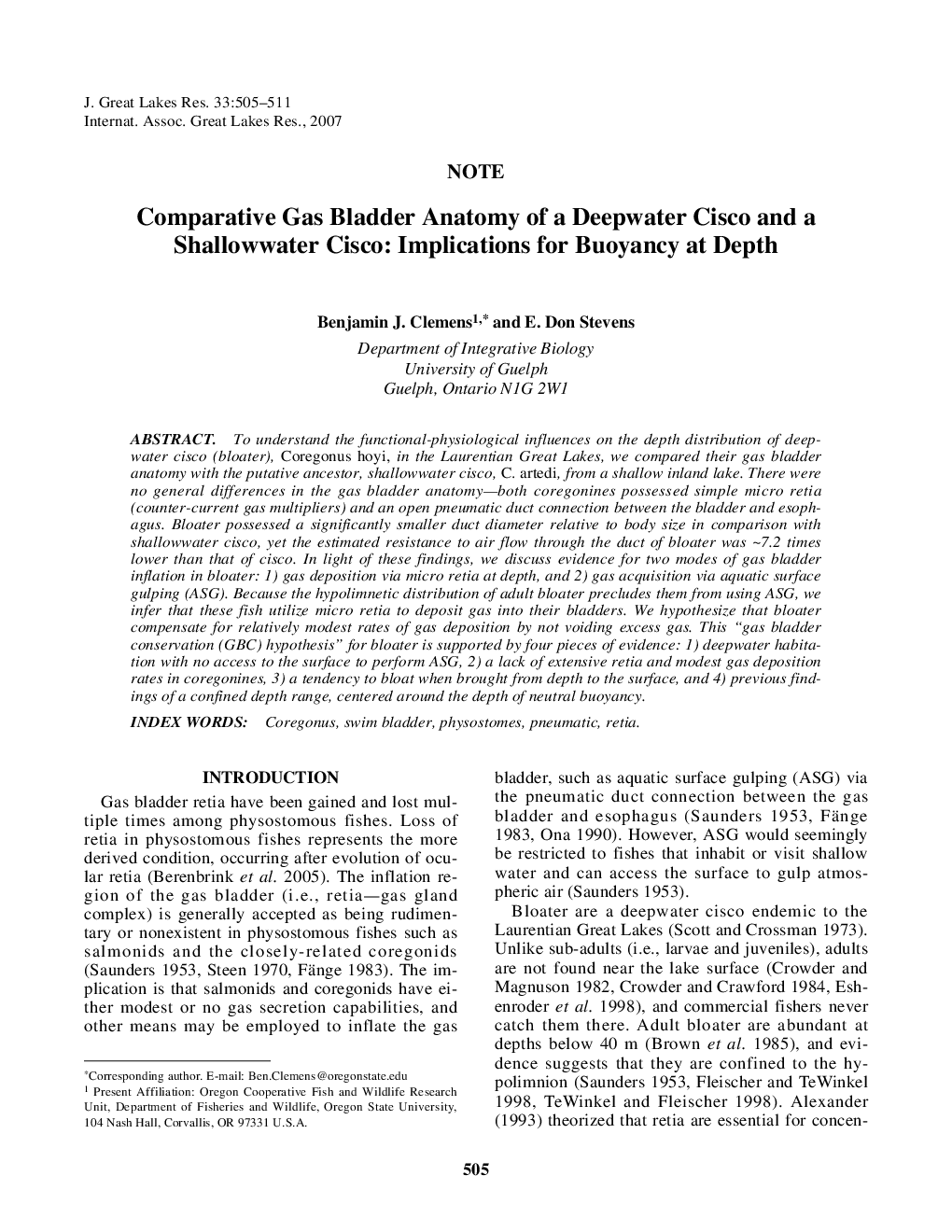| Article ID | Journal | Published Year | Pages | File Type |
|---|---|---|---|---|
| 4399397 | Journal of Great Lakes Research | 2007 | 7 Pages |
Abstract
To understand the functional-physiological influences on the depth distribution of deepwater cisco (bloater), Coregonus hoyi, in the Laurentian Great Lakes, we compared their gas bladder anatomy with the putative ancestor, shallowwater cisco, C. artedi, from a shallow inland lake. There were no general differences in the gas bladder anatomy-both coregonines possessed simple micro retia (counter-current gas multipliers) and an open pneumatic duct connection between the bladder and esophagus. Bloater possessed a significantly smaller duct diameter relative to body size in comparison with shallowwater cisco, yet the estimated resistance to air flow through the duct of bloater was â¼7.2 times lower than that of cisco. In light of these findings, we discuss evidence for two modes of gas bladder inflation in bloater: 1) gas deposition via micro retia at depth, and 2) gas acquisition via aquatic surface gulping (ASG). Because the hypolimnetic distribution of adult bloater precludes them from using ASG, we infer that these fish utilize micro retia to deposit gas into their bladders. We hypothesize that bloater compensate for relatively modest rates of gas deposition by not voiding excess gas. This “gas bladder conservation (GBC) hypothesis” for bloater is supported by four pieces of evidence: 1) deepwater habitation with no access to the surface to perform ASG, 2) a lack of extensive retia and modest gas deposition rates in coregonines, 3) a tendency to bloat when brought from depth to the surface, and 4) previous findings of a confined depth range, centered around the depth of neutral buoyancy.
Keywords
Related Topics
Physical Sciences and Engineering
Earth and Planetary Sciences
Earth and Planetary Sciences (General)
Authors
Benjamin J. Clemens, E. Don Stevens,
